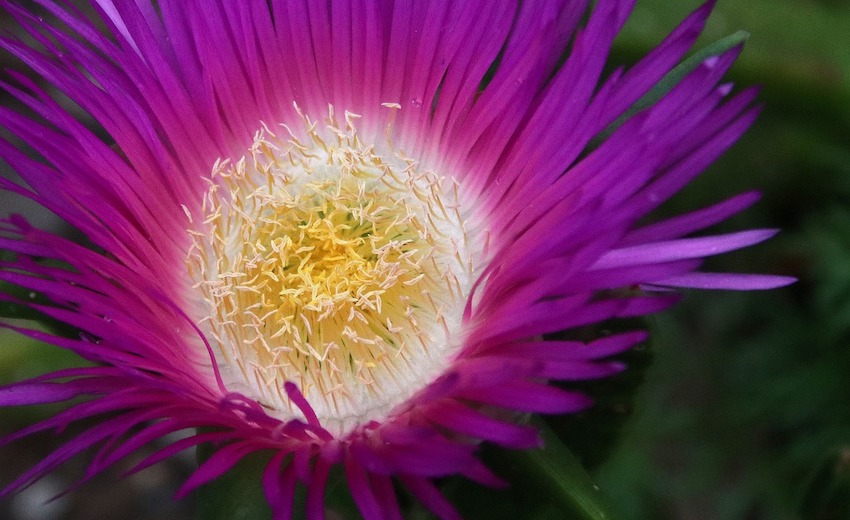


The Rocquine coast is now clear of Sour Fig after volunteers painstakingly removed the non-native plant by hand.
Yesterday saw the final meeting of the Guernsey Conservation Volunteers (GCV) in that area.
They first met there to pull out the plant by hand in June 2023.
In March this year, the GVC had said that Rocquaine would be clear of Sour Fig by the end of this year, meaning they have beaten their prediction by five months.
Pictured: The final work party helping to clear Sour Fig at Rocquaine yesterday.
Over the past 13 months, 14 work parties comprising more than 200 people made up of volunteers from local schools, corporate groups, the WI, and individuals, have spent around 450 hours at Rocquaine.
The project has been supported by the Strategy for Nature Fund which offers financial support for environmental initiatives which aim to further the goals and objectives of the Strategy for Nature.
In total the volunteers have filled 35 skips with more than 40 tonnes of Sour Fig.
The final work party yesterday saw a mix of people tackle the last few patches of the species. Angela Salmon, the GCV Operations Director said the work isn't over yet though.

Pictured: Further work parties arranged by the GVC will tackle Sour Fig and other non native plants across the island.
Now that the initial removal of Sour Fig has been done, the GVC will maintain the area by monitoring it and then removing any new shoots of Sour Fig.
"I would like to thank everyone who has been involved with this project; it’s been a fantastic community effort to clear this large site of Sour Fig," she said.
"The habitat is already recovering and the biodiversity is increasing which is wonderful to see."
The genus Carpobrutus is native to the southern hemisphere, in particular it is recorded as native e to South Africa, Australia, and Chile.
Examples of the species are sour fig, ice plant, pigface, Hottentot fig, and clawberry. They are all ground-creeping plants with succulent leaves and large daisy-like flowers.
The genus contains a number of very closely related and hard to separate species and varieties, which often hybridise. They are also often edible, particularly the fruits and the succulent leaves.

Pictured: A Sour Fig flower.
Sour Fig was first recorded in Guernsey since in 1886, after it was brought into the island as a garden plant from South Africa.
It then escaped from gardens into the wild and spread, and is now mainly found around the island's coast where it spreads across grasslands forming a dense mat.
Sour Fig was previously killed by heavy frost but as harsh winters are now more scarce than in the late 1800s, the plant has been able to spread. It is known to outcompete all native species and reduce biodiversity wherever it grows. However, when Sour Fig is removed, native coastal plants have been seen to return.
Native plants which will regrow if Sour Fig is removed can include Thrift, Sea Beet, Sea Campion, Sheep’s-bit and Rock Sea-spurrey. These native plants will provide food and shelter for many insects and small mammals, leading to an increase in biodiversity.
Botanical surveys have shown that more than 60 native plant species can regrow on sites where Sour Fig previously grew.
Rocquaine “free from Sour Fig” by the end of the year
Project to remove Sour Fig gets going
Comments
Comments on this story express the views of the commentator only, not Bailiwick Publishing. We are unable to guarantee the accuracy of any of those comments.